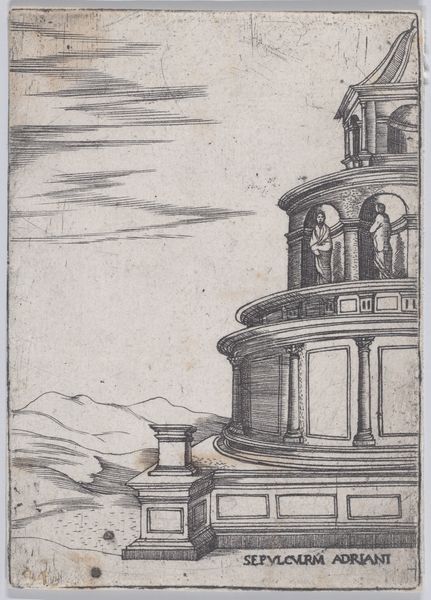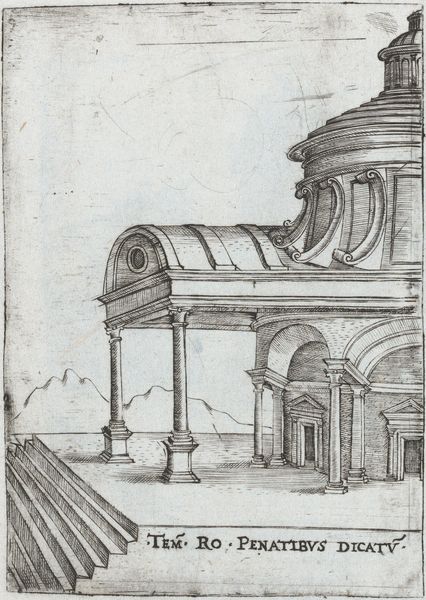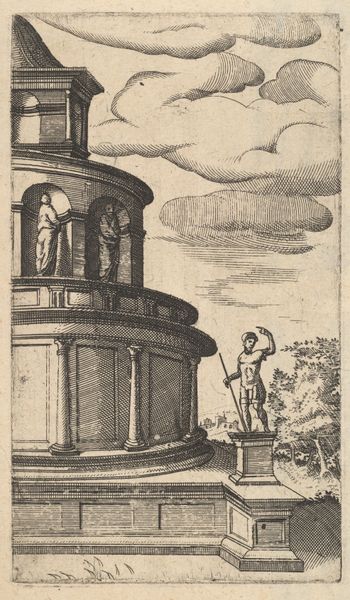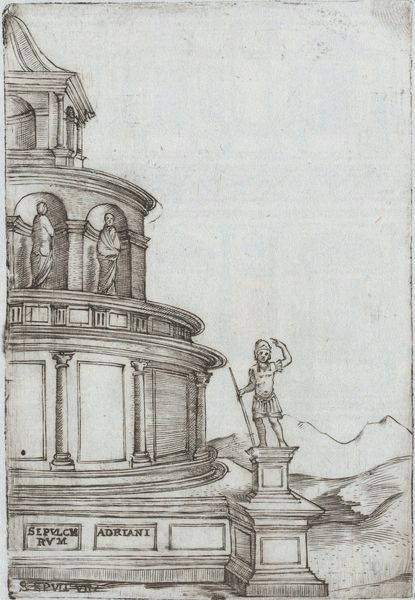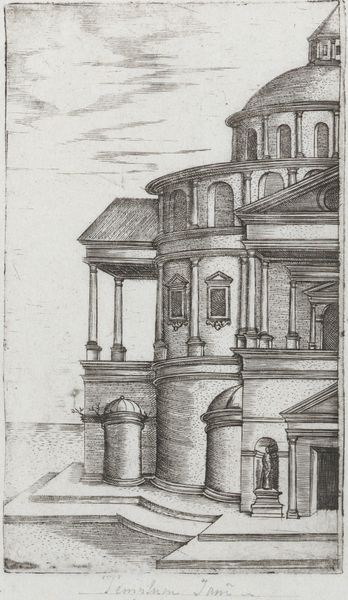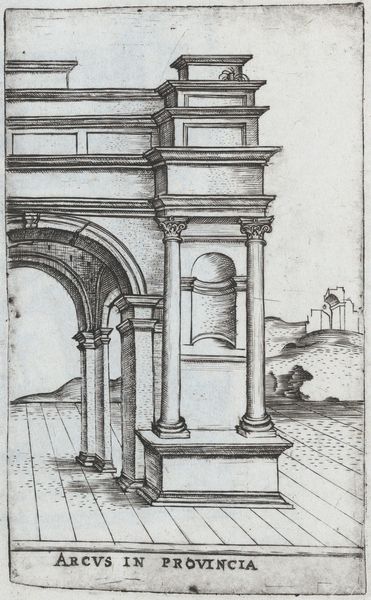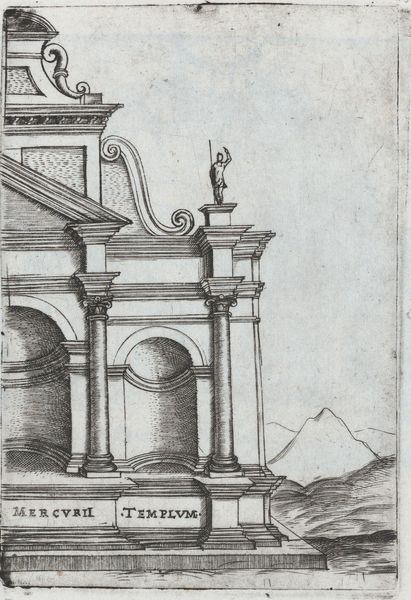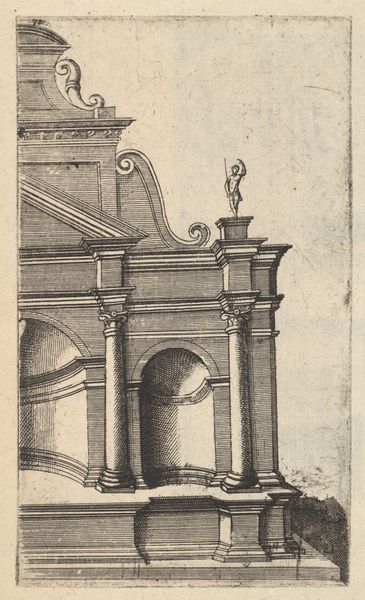![Partial view of a Building [Tem Ro Penatibus Dicatu] from the series 'Ruinarum variarum fabricarum delineationes pictoribus caeterisque id genus artificibus multum utiles' by Lambert Suavius](/_next/image?url=https%3A%2F%2Fd2w8kbdekdi1gv.cloudfront.net%2FeyJidWNrZXQiOiAiYXJ0ZXJhLWltYWdlcy1idWNrZXQiLCAia2V5IjogImFydHdvcmtzLzJkMTY4ZTYxLTA2NTAtNGIwZC04NjZhLTY0Y2JjYzNhYmRiYS8yZDE2OGU2MS0wNjUwLTRiMGQtODY2YS02NGNiY2MzYWJkYmFfZnVsbC5qcGciLCAiZWRpdHMiOiB7InJlc2l6ZSI6IHsid2lkdGgiOiAxOTIwLCAiaGVpZ2h0IjogMTkyMCwgImZpdCI6ICJpbnNpZGUifX19&w=3840&q=75)
Partial view of a Building [Tem Ro Penatibus Dicatu] from the series 'Ruinarum variarum fabricarum delineationes pictoribus caeterisque id genus artificibus multum utiles' 1554
0:00
0:00
drawing, print, etching, engraving, architecture
#
drawing
# print
#
etching
#
landscape
#
perspective
#
form
#
11_renaissance
#
line
#
engraving
#
architecture
Dimensions: Plate: 4 7/8 x 4 1/8 in. (12.4 x 10.5 cm) [uneven edge]
Copyright: Public Domain
This is a 16th-century print by Lambert Suavius, made using the etching process. It comes from a series of images designed to be useful to painters and other artists. The etching process involves coating a metal plate with a waxy, acid-resistant substance, drawing into that surface with a stylus, and then submerging the plate in acid. The acid eats away at the exposed metal, creating an incised line. This is then inked and printed onto paper. Look closely, and you can see the characteristic texture of etched lines, defining the architecture and landscape. The act of etching allows the artist to produce multiple copies of an image. This was essential for spreading visual ideas at the time. It also speaks to a culture of skilled labor, where artisans were deeply involved in the relatively complex production of images. So, consider how the print's very existence is entwined with the technologies of its time, and the community of makers who brought it into being.
Comments
No comments
Be the first to comment and join the conversation on the ultimate creative platform.
